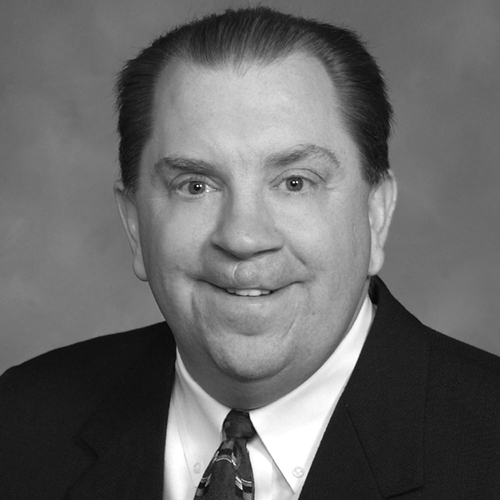When Rogers Memorial Hospital first opened its doors in 1907 as the Oconomowoc Health Resort, understanding of mental health and how it should be treated was fairly basic. Even so, the health center based in Oconomowoc, Wisconsin, did its best to provide patients with the era’s most innovative mental healthcare treatments.
More than a century later, Rogers Memorial Hospital is the anchor of the Rogers Behavioral Health System, a fast-growing nonprofit behavioral healthcare provider that, at its core, provides services for children, teens, and adults suffering from disorders such as obsessive-compulsive disorder, anxiety, depression, addiction, and eating disorders. To say that the health system has come a long way from its early days of offering hydrotherapy is an understatement: today, Rogers is one of the largest behavioral-specific health systems in the Midwest and the largest in Wisconsin, serving about 17,000 patients every year.
One of the key players pushing Rogers forward is CFO Michael Hedrick. Since joining Rogers Behavioral Health System in 2013, Hedrick has helped lead the charge in executing a growth and development plan, in addition to guiding financial strategy, capital formation, and IT infrastructure.

Hedrick uses his extensive experience in advising growth firms to bring mental health services to more people. He believes that there are three major obstacles that individuals with behavioral health issues face: societal stigma, funding shortfalls in the field of behavioral health, and denial by those affected that they have a treatable condition.
“My role here has been to facilitate a growth and development team, and to implement and support the vision they have and the services the organization provides. I can’t run the units or do therapy, but I can certainly help,” Hedrick says. “Blessed is the word. It’s a perfect fit. Here, I get to contribute to something that has meaning.”
Even in the past three years, Rogers has benefited from Hedrick’s expertise as it underwent rapid growth, increasing days of patient care by 67 percent to in excess of about 200,000 annually. One of the projects Hedrick is most excited about is the spread of Rogers Behavioral Health clinics throughout the country. Although based in Wisconsin, Rogers has recently opened clinics in Chicago, Minneapolis, Tampa, Florida, and Nashville, Tennessee. Rogers is also considering expanding to markets on both the East and West Coasts in the future. For the 2016 fiscal year, Rogers recorded more than 17,000 admissions across its fifteen locations.
Although Rogers’s expansion may seem rapid, Hedrick sees growth as beneficial not only to the growing number of people the organization is able to treat, but also to Rogers’s employees themselves.
“If your organization isn’t growing and pushing in new directions, then your staff becomes stagnant,” he says. Pushing growth and improvement ensures that employees are engaged and see a future with Rogers. “Having positive energy in the workplace also helps our staff maintain the emotional resiliency to be at their best with our patients and give them compassionate care.”
Compassionate care is crucial at Rogers, which is why the company has focused on the quality of its growth, as well as its geographical spread. Hedrick says one of Rogers’s biggest initiatives recently has been building up its IT infrastructure. In other words, Rogers has gone digital. In July 2016, Rogers became the first standalone acute psychiatric hospital to achieve HIMSS Stage 6 with an EHR system. “We are probably going to end up with one of the most advanced IT systems in behavioral health,” he says.
Rogers essentially revamped its information systems from the ground up, replacing each piece of equipment in the health system, as well as wiring in nine new locations to ensure the entire system is connected through a high-speed bandwidth.
Hedrick’s team was also able to implement an electronic financial system, thereby effectively pulling billing out of the paper age. Not only are 94 percent of bills now electronic clean claims, Hedrick says, but Rogers can now also compare financial data to other electronically collected data. For example, Rogers can compare billing data to cost information to create financial statements for each individual program at Rogers, meaning that the hospital can analyze how an eight-person Sunday night anxiety group is doing from both a financial and census standpoint.
“Coming from outside the healthcare industry, I found that the whole revenue cycle is an amazingly complex piece of work,” he says. “A misstep anywhere in the process has a ripple effect that can really create problems. You have to make sure from the moment you start talking to someone about how you can help them that everything is done right. Prior to joining Rogers, I had no idea how much effort and technology went into getting that part right.”
Patients and employees at Rogers Behavioral Health, however, can rest assured that Hedrick will get it right. Although the CFO is quick to commend members of his team for their vision and hard work, Hedrick’s own passion for working at Rogers and supporting its mission comes across clearly.
“When I look back at what we’ve done in the past three years, it far surpasses what I’ve done in the prior twenty,” he says. “It’s good to be on the side of the angels.”

